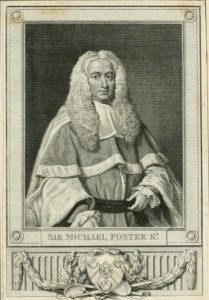Episode 5: Felony Murder and Constructive Malice
Today we take a whirlwind tour through the controversial topic of felony murder and constructive malice!
In today’s episode, we ask whether it is murder when someone kills someone else unintentionally but during the course of a serious crime (or a felony). Normally killing has to be intentional to qualify as murder – but does the criminal context change this rule? For instance, is it murder when a robber accidentally shoots a cashier during an armed robbery? What about when a kidnapper smothers someone by accident while kidnapping them?
Some modern common law jurisdictions are deeply divided on this topic, and we’ll see why after looking at felony murder’s chaotic history. We’ll see early-modern common law superstars butt heads over obscure examples (is it murder when you go poaching but your arrow goes astray and kills a boy lurking in a nearby bush?). We’ll also see how an early-eighteenth century attempt to clear things up just muddles it even more and ultimately gives us the term “felony murder.” We’ll ask what’s so constructive about malice anyways. And finally, we’ll see how theory and practice never quite seem to match up in this bizarre area of the law.
Warning: modern terms for what we’re discussing today vary, particularly in the USA. Depending on the jurisdiction, you can find felony murder under a variety of names and degrees.
Got any comments on felony murder? Think I didn’t come down hard enough on the doctrine, or conversely, that I was too critical of it? Send me your thoughts on our contact page or @murderhistorian on Twitter!
Be sure to subscribe on your podcast app. Click here to subscribe to Apple Podcasts, Spotify, and Google Podcasts. Follow us on Twitter @murderhistorian.
Sources and notes:
- Guyora Binder’s article, “The Origins of American Felony Murder Rules,” Stanford Law Review, Oct., 2004, Vol. 57, No. 1 pp. 59-208 is the fullest history imaginable on this topic. If you’re wondering what happened in the 19th century, go to Binder!
- See Glanville Williams, “Constructive Malice Revived, “The Modern Law Review,” Vol. 23, No. 6 (Nov., 1960), pp. 605-629 for an explanation of why DPP v Smith was wrongly decided.
- Felony Murder as a First Degree Offense: An Anachronism Retained, 66 Yale L.J. (1957) is interesting, especially for its description of how felony murder became a first-degree murder offence in early post-Revolutionary USA
- If you’re wondering about the common-law felony “mayhem” (as I certainly was), check out this recent blog post from legal historian Gwen Seabourne

